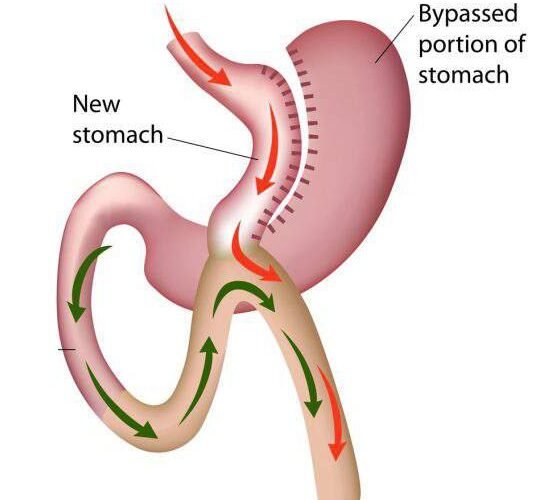Title: Thyroid’s Tale: Unveiling the Role of Thyroid Releasing Hormone in Hormonal Disorders
Introduction
The intricate dance of hormones within the human body orchestrates a symphony of physiological functions, and at the center of this hormonal orchestra lies the thyroid gland. One key player in regulating the thyroid gland’s activity is the Thyroid Releasing Hormone (TRH). This article delves into the fascinating narrative of TRH, unraveling its crucial role in hormonal disorders and shedding light on its impact on overall health.
Understanding Thyroid Releasing Hormone (TRH)
TRH, a small neuropeptide, is produced in the hypothalamus, a region of the brain responsible for maintaining homeostasis. Its primary function is to stimulate the release of thyroid-stimulating hormone (TSH) from the pituitary gland. TSH, in turn, prompts the thyroid gland to produce and release thyroid hormones, namely thyroxine (T4) and triiodothyronine (T3). These thyroid hormones play a pivotal role in regulating metabolism, energy production, and overall growth and development.
The Hypothalamus-Pituitary-Thyroid Axis
To comprehend the role of TRH, one must explore the intricate relationship known as the Hypothalamus-Pituitary-Thyroid (HPT) axis. The hypothalamus senses the body’s need for thyroid hormones and secretes TRH, which signals the pituitary gland to release TSH. TSH then acts on the thyroid gland to produce and release T3 and T4. This feedback loop ensures a delicate balance of thyroid hormones, crucial for maintaining optimal bodily functions.
Hormonal Disorders and the TRH Connection
Imbalances in the HPT axis can lead to various hormonal disorders, affecting the thyroid gland’s function and, consequently, overall health. Let’s explore two prominent conditions: hypothyroidism and hyperthyroidism.
- Hypothyroidism:
Hypothyroidism occurs when the thyroid gland produces insufficient thyroid hormones. In this scenario, the hypothalamus releases more TRH to stimulate TSH production, attempting to boost thyroid hormone levels. However, if the thyroid gland is unable to respond adequately, a cycle of elevated TRH and TSH persists, contributing to the characteristic symptoms of hypothyroidism, such as fatigue, weight gain, and cold intolerance.
- Hyperthyroidism:
Conversely, hyperthyroidism results from an overproduction of thyroid hormones. In this case, the hypothalamus and pituitary attempt to curb excessive thyroid hormone release by reducing TRH and TSH levels. Despite this feedback mechanism, the thyroid gland may continue to produce excessive hormones, leading to symptoms such as weight loss, anxiety, and heat intolerance.
Thyroid Releasing Hormone as a Diagnostic Tool
Understanding the role of TRH has implications for diagnostic procedures related to thyroid disorders. TRH stimulation tests involve administering synthetic TRH to evaluate the thyroid’s responsiveness. In cases of suspected hypothyroidism, a lackluster response to TRH may indicate a dysfunctional thyroid gland, while an overly responsive thyroid suggests hyperthyroidism.
Therapeutic Approaches Targeting TRH
As researchers continue to unravel the complexities of hormonal disorders, therapeutic approaches targeting TRH are emerging. Modulating TRH levels or designing medications that mimic its effects could offer new avenues for treating thyroid-related conditions. These advancements may lead to more targeted and effective treatments with fewer side effects.
Beyond the Thyroid: TRH in Mental Health
While TRH’s primary role is associated with the thyroid gland, recent studies have explored its potential impact on mental health. TRH receptors are present in various brain regions, and alterations in TRH levels have been linked to mood disorders, including depression and anxiety. This opens up intriguing possibilities for investigating TRH as a therapeutic target in mental health treatments.
Conclusion
The thyroid’s tale, intricately woven with the threads of Thyroid Releasing Hormone, highlights the pivotal role this neuropeptide plays in maintaining hormonal balance. Understanding the dynamics of the HPT axis and the intricate feedback loops involving TRH provides valuable insights into diagnosing and treating thyroid disorders. As research continues, the story of TRH expands beyond the thyroid, hinting at its potential influence on mental health. In the ongoing quest to unlock the secrets of hormones, Thyroid Releasing Hormone stands as a central character, guiding researchers towards innovative approaches to enhance human health and well-being.
Prolactin and Adrenal Disorders: Decoding the Hormonal Crossroads
Embark on a Wellness Journey: Exploring.
In the pursuit of holistic well-being, Dr. Zaar, a distinguished specialized clinic dietitian in Lahore, introduces an innovative service that.
Read More
The Unrecognized Detriments of Oxytocin and.
Introduction How our bodies work is fascinating, especially FAQ regarding hormones like oxytocin. Often called the “love hormone” or “trust.
Read More